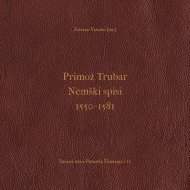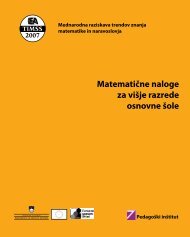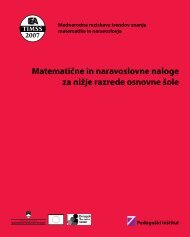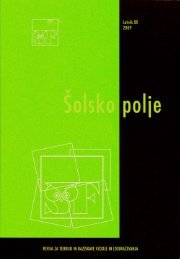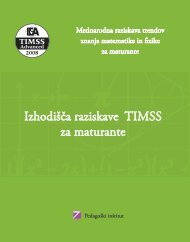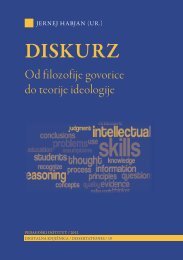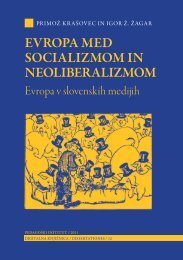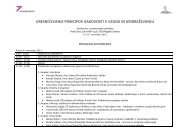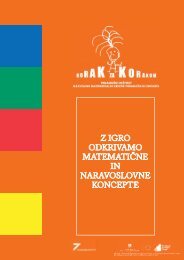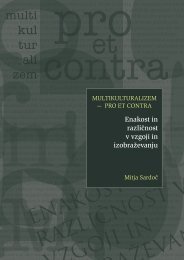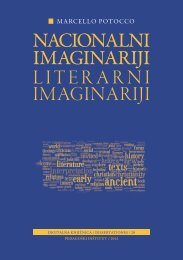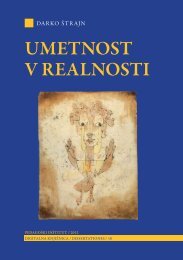Šolsko polje, letnik XX, številka 5-6, 2009: Vloga ... - Pedagoški inštitut
Šolsko polje, letnik XX, številka 5-6, 2009: Vloga ... - Pedagoški inštitut
Šolsko polje, letnik XX, številka 5-6, 2009: Vloga ... - Pedagoški inštitut
You also want an ePaper? Increase the reach of your titles
YUMPU automatically turns print PDFs into web optimized ePapers that Google loves.
TOPOI IN CRITICAL DISCOURSE ANALYSIS59it becomes pretty obvious that Aristotle derived his common topics fromhis categories. While categories represent the most general (and basic)relations between different entities in the world (and are, therefore, metaphysicalin nature), the common topics (i.e. topoi) represent the mostgeneral (and basic) relations between concepts, notions, or words representing(or denoting) these different entities in the world. That is whyAristotle could present them as a »list« (though it really wasn’t a list inthe sense DHA is using the term): because they were so very general, sovery basic, that they could have been used in every speech or writing.Intentionally or not. Which is not the case with the DHA lists of topoi wehave been discussing above: these topoi can not be used in just any situation,but in rather particular situations, especially the topoi »identified« byKrzyzanowski (in that regard they could be classified not as common topoi,but more likely as specific topoi, something Aristotle called idia (idiacould be roughly translated as »what is proper to...«; »what belongs to...«)).Also, this »list« of common topoi wasn’t there for possible or prospectiveauthors »to check their arguments against it«. This »list« was there for generaluse, offering a stock of (possible and potential) common topoi for(possible and potential) future arguments (and speeches).Here is a short (and schematic) overview of how Aristotle defines themechanics and the functioning of topoi and their parts in his Topics, awork that preceded Rhetoric. We have to start with a few definitions.Problems (what is at stake, what is being discussed) are expressed bypropositions. Every proposition consists of a subject and predicate(s) thatbelong(s) to the subject. These predicates (usually referred to as predicables)are of four kinds: definition, genus, property, and accident:»Definition is a phrase indicating the essence of something.« (T. I. v. 39-40)»A genus is that which is predicated in the category of essence of severalthings which differ in kind.« (T. I. v. 32-33)»A property is something which does not show the essence of a thing butbelongs to it alone and is predicated convertibly of it.« (T. I. v. 19-21)»An accident is that which is none of these things ... but still belongs to thething.« (T. I. v. 4-6)And here is how Aristotle describes the role of these predicables and theirinterdependence:



